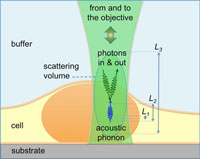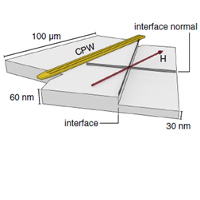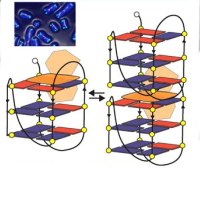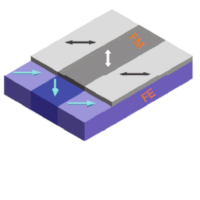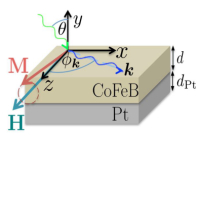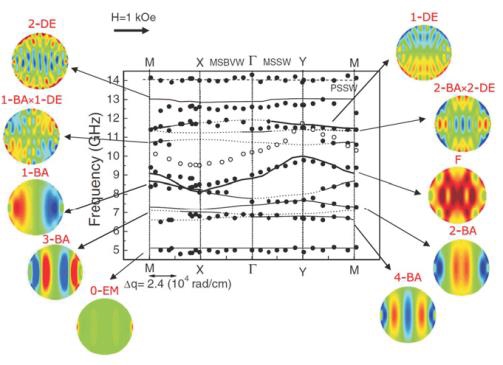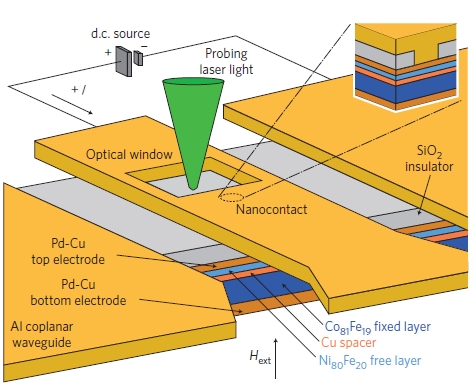Magnonic crystals and Spintronics
Magnonic crystals and Spintronics
Contact person: Gianluca Gubbiotti
|
The IOM researchers working at the Perugia unit conduct their activity for investigating magnetization dynamics of low dimensional magnetic systems such as, thin film, multilayers and patterned structures through conventional and micro-focused Brillouin light scattering technique. In this report we present two main topics which have been addressed in recent years: namely magnonics crystals and spin-transfer torque oscillators. Similarly to photons in photonic crystals, the spectrum of spin excitations in materials with periodically modulated properties shows bands of allowed magnonic states, alternating with forbidden band gaps. This constitutes a new class of artificial crystals, now known as magnonic crystals (MCs), where collective spin excitations rather than light are used to transmit and process information. The IOM researchers have been the first to measure the band structure over the whole irreducible part of the first Brillouin zone (BZ) in a two-dimensional magnonic crsytal consisting of a square array of Permalloy nanodiscs with in-plane magnetization (see Fig. 1). The formation of the magnonic band structure is provoked by dynamic dipolar interactions between standing waves in the nanodisks. [S. Tacchi et al, Phys. Rev. Lett. 107, 127204 (2011)]
Fig. 1 Measured (dots) and calculated (curves) frequencies as a function of the spin-wave wave vector along the principal directions of the 1 st BZ, for an external magnetic field H=1.0 kOe. The calculated spatial profiles of the different eigenmodes are reported as insets. |
Fig. 2 Cross-section of the nanocontact sample, revealing the layers of the spin valve mesa and the active area of the STO device. An optical window is etched into the central conductor of the waveguide close to the nanocontact where the laser beam is scanned. Spin torque oscillators with nanoscale electrical contacts are able to produce coherent spin waves in extended magnetic films, and offer an attractive combination of electrical and magnetic field control, broadband operation, fast spin-wave frequency modulation, and the possibility of synchronizing multiple spin-wave injection sites. The IOM staff has study to directly observe propagating spin waves launched from a spin torque oscillator with a nanoscale electrical contact into an extended Permalloy film through the spin transfer torque effect. The data, obtained by wavevector-resolved micro-focused Brillouin light scattering, show that spin waves with tunable frequencies can propagate for several micrometres. Micromagnetic simulations provide the theoretical support to quantitatively reproduce the results. [M. Madami et al, Nature Nanotechnology 6, 635 (2011).] |

